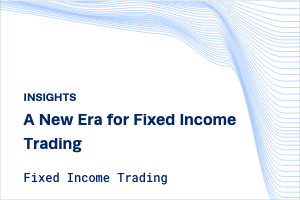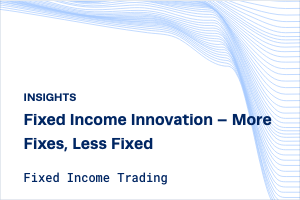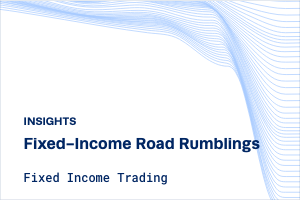New lows in financial markets, a third pandemic winter on the horizon, signs of a waning economy, an increasingly hostile geopolitical climate, and a pullback in Wall Street spend. For traders, conditions are not getting any easier, any time soon.
There has been much debate about whether machines can overtake humans in financial markets. My view is that they can, but only partially. Execution Management Systems, or EMSs, which first proliferated in the equity markets, are now widely available to fixed income traders. A product of a rapid electronification of fixed income trading over the past decade and accelerated by volatility and virtual work during the height of the pandemic, fixed income EMSs are now the norm in credit markets and are steadily gaining a foothold in other fixed income asset classes.
On the backend, and especially in fast-evolving financial markets, technology requires significant and continued investment, management, and development to remain useful and relevant to traders. This is a tall ask for a financial industry that has been shrinking since 2008, but we have also seen the industry aspire to become more efficient since that time. The result: trading technology has seen huge leaps forward and better tools are now available to traders across asset classes.
EMSs have evolved from simple execution tools into highly sophisticated, all-encompassing interfaces which offer vital support to traders and their operations. Complex and far-reaching functionality such as pre-trade analysis, smart algorithms and trade automation can now all be carried out by a fixed-income EMS. What’s more, fixed-income EMSs are essential for streamlining and normalising workflows across counterparties and venues, and for supporting the expanding list of trading protocols.
Decision time
With so much new functionality and tough conditions ahead, traders need to make vital decisions now on which tools best equip them to capitalize on opportunity and risk. A wrong buying decision can result in trading desks becoming stuck with a system that is hard to move away from, resulting in missed opportunities and a costly process of switching out deeply engrained, cumbersome technology.
Whether a desk is looking to replace an outdated legacy EMS, or acquire one for the first time, there are several principals that will help traders navigate this important buying decision.
Go online immediately with a SaaS solution: Amid current market conditions and outlook, trading desks cannot afford to wait to add powerful new tools to their armoury. SaaS solutions can be quickly deployed from the cloud to make an instant, measurable impact on execution capabilities. While software has been evolving in equity markets for the past 20 years, SaaS technology has never been available to fixed income traders until now.
Maximize speed with liquidity connections: The best platforms will facilitate access to deep and varied pools of liquidity through connectivity to all available venues and protocols. When multiple sources of liquidity are available through one execution platform, traders can act more quickly
See around corners with superior data: When traders can quickly reference clean, usable data, they improve their decision making. Data-backed analytics and insights are essential to any EMS, and have the potential to dramatically improve decision-making so that traders have a clear view of exposures and possible market pressures.
Bring order to the chaos of a fragmented market and view the entire liquidity landscape through one lens: Credit liquidity is disparate throughout the trading day – in dissemination style, timing, amount available and methods available for execution. An EMS brings order to this chaos and gives buyside trading teams the right toolkit that covers all available pathways and protocols.
Choose one provider that covers all asset classes to maximize efficiency: Having an EMS that works across asset classes is vitally important and allows even the largest trading firms to consolidate workflows within a single system.
Collectively commit to innovation: An EMS provider must have the scale and expertise to nurture technological innovation over time and tailor systems to a trader’s evolving needs. Traders must be able to trust third parties to drive innovation and therefore should choose a vendor that regularly updates its products and has the scale and capability of development to ensure systems remain cutting edge.
Selecting a fixed income EMS is not a simple process, but these are difficult times, and we are used to tough decisions. It is not a case of picking a product off a shelf to satisfy an impulse, it is a complex product that has a material and long-term impact the success of a trading desk.



